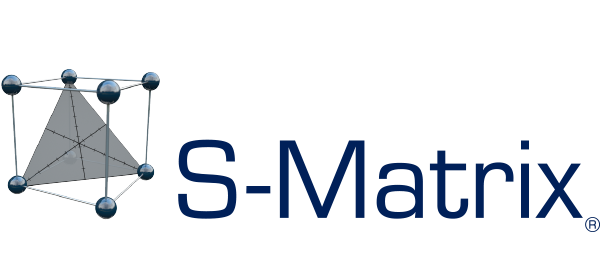About S-Matrix
S-Matrix develops advanced and innovative Quality by Design software. S-Matrix has changed our product name from Fusion AE to Fusion QbD® as an acknowledgement of our commitment to developing software that is 100% aligned with Quality by Design (QbD) principles and guidances. Our Fusion QbD Software Platform incorporates expert-system guided statistical Design of Experiments (DOE) and multivariate data analysis/modeling technologies within a Quality by Design (QbD) framework. Tailored modules are designed for targeted applications in Analytical, Formulation, and Chemical and Process R&D laboratories within the Pharmaceutical, Biotechnology and Chemical industries. Built to work seamlessly with Empower, ChemStation/OpenLAB and Chromeleon Chromatography Data Software (CDS), Fusion QbD also offers users fully integrated 21 CFR Part 11 support and a comprehensive workflow management system.
Located on the scenic northern California coast, S-Matrix was incorporated in 1985 as a consulting service that specialized in developing and applying advanced statistical tools and methods to solve industrial research and development problems in the Aerospace, Fine Chemicals, Semiconductor, Consumer Products, and Pharmaceutical industries. Over the years the company has evolved into a leading provider of advanced Design of Experiments software with a customer base that includes the world’s largest pharmaceutical and biotech companies.
Ongoing strategic alliances with international pharmaceutical, analytical instrument, and process equipment manufacturers have enabled S-Matrix to rapidly automate specific R&D experimentation applications for use within the framework of its Quality by Design based Fusion QbD software platform.
Some of the innovations developed and offered first by S-Matrix include:
Fusion LC Method Development — Automated QbD Software Works with Your CDS
S-Matrix’s patented Fusion QbD platform (U.S. Patent No. 7,239,966 B2) exports statistical experimental designs to a CDS as ready-to-run instrument methods and sequences in the native file/data formats of that CDS, and imports all chromatographic results for instant data analysis and reporting. All of these exchanges employ file-less data transfer protocols which leave no data outside of a regulatory compliant software environment.
Novel Chromatographic Method Performance Characterizations
For stationary phase and mobile phase screening studies S-Matrix’s patented Trend Responses™ technology (U.S. Patent No. 7,613,574 B2) overcome the inherent limitations in traditional data generated by both trial-and-error and classical Design of Experiments (DOE) approaches to place DOE activities on a rigorous and quantitative footing.
Robustness Simulator
S-Matrix’s patented Robustness Simulator™ technology (U.S. Patent No. 7,606,685 B2) is the first software to completely integrate DOE, Monte Carlo simulation, and Statistical Process Control (SPC) techniques and methods into expert-system R&D software. The result is the ability to efficiently study any product or process and simultaneously optimize it for both mean (average) performance and robustness in terms of all critical quality attributes.
Advanced Optimality Designs
S-Matrix’s algorithm design generators use a combination of optimality criteria to assure (1) uniform sampling (coverage) of experimental design regions, and (2) sampling of the interior of the experimental design region where complex variable effects are commonly expressed. These designs are proven to be far superior to simple D-optimal designs from a diagnostic and predictive modeling (data-2-knowledge) standpoint.
Automated and User-interactive Operating Modes for All Product Modules
Automated mode of operation — all statistical decisions by which the experimental design is selected and the data analysis is performed are automatically made for the user based on rigorous statistical principles and criteria, and all decisions are documented in design and analysis reports.
User-interactive mode — wizard dialogs guide the user through all statistical decisions by which the experimental design is selected and data analysis is performed. All valid options are displayed with the software's recommendations highlighted and pre-selected by default. All user selections are documented in design and analysis reports.
Advanced Repair Designs (Data Mining Support)
S-Matrix’s algorithm design generators can diagnose the information content of existing data sets in terms of their ability to support development of diagnostic and predictive multivariate statistical models (data-2-knowledge). If the data sets do not support full model development, the design generators can create efficient "Repair Designs" which define the specific additional data required to fill in all information gaps with the minimum number of additional experiment runs.
